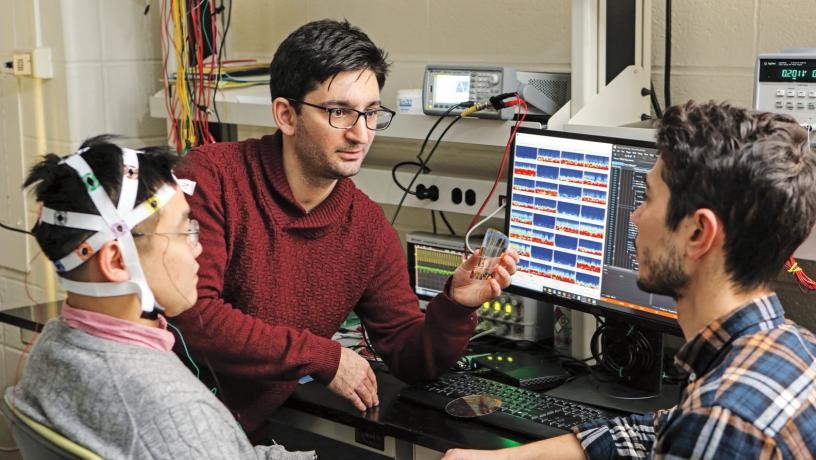Assistant Professor of Electrical Engineering Dion Khodagholy exploits unique materials to create minimally invasive, biocompatible devices, conducting research that could lead to better understanding of brain function in health and disease.
In a recent breakthrough, Khodagholy designed a new class of polymer-based neural interfaces that acquire neural data previously difficult or impossible to obtain. These unique devices are highly stable in physiological environments and more efficient in detecting brain signals.
“Active neurons induce changes in ion concentrations; machine circuits historically have responded to changes in electron flow,” he says. “Our devices interface with neurons using their language—that is, ionic signals.”
Such advances are driven by his lab’s focus on translating designs to clinical settings. To accomplish this, Khodagholy collaborates with researchers in neuroscience and medicine, such as Assistant Professor of Neurology Jennifer Gelinas from Columbia University Irving Medical Center. Together, they’re working toward diagnostic and treatment options for those with drug-resistant forms of epilepsy.
For these patients, surgery sometimes offers the best chance for freedom from seizures. But first, clinicians need tools to localize pathological brain activity. “If we can get more and better quality information from our devices, we could hopefully make this a reality for more patients,” Gelinas says.
In response, Khodagholy’s group devised the NeuroGrid, a conducting polymer-based, conformable, light, and high-density electrode array. Now in testing, the NeuroGrid could improve understanding of how brain seizures arise, while minimizing risk associated with implantation.
Ultimately, Khodagholy’s ion-gated transistors—biocompatible and conformable circuit components forming soft, implantable systems that responsively stimulate the brain—could manipulate neural networks to treat disorders like depression.
“Our research spans from the physical understanding of materials, to investigating mechanisms of brain function, to designing next-generation bioelectronic devices for precision medicine,” he says.
PHOTO CREDIT: JOHN ABBOTT | ORCHID PHOTO COURTESY DION KHODAGHOLY

